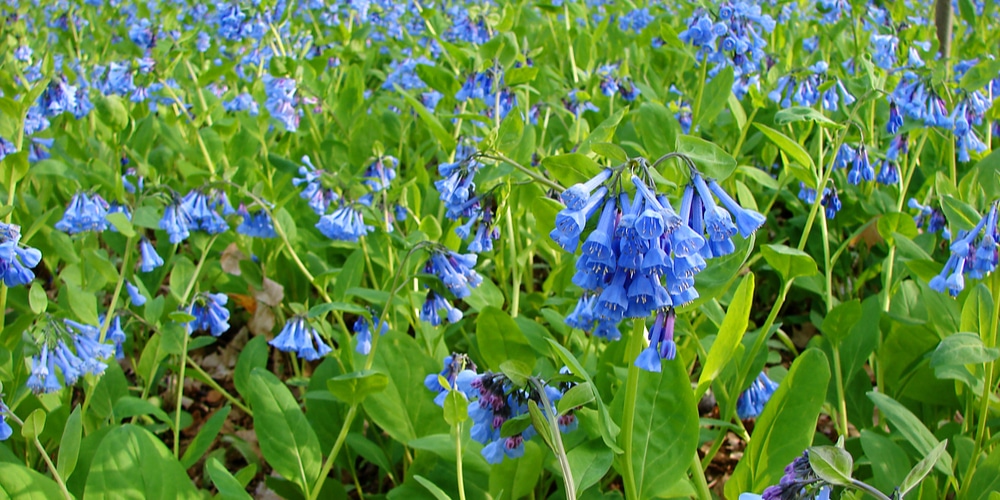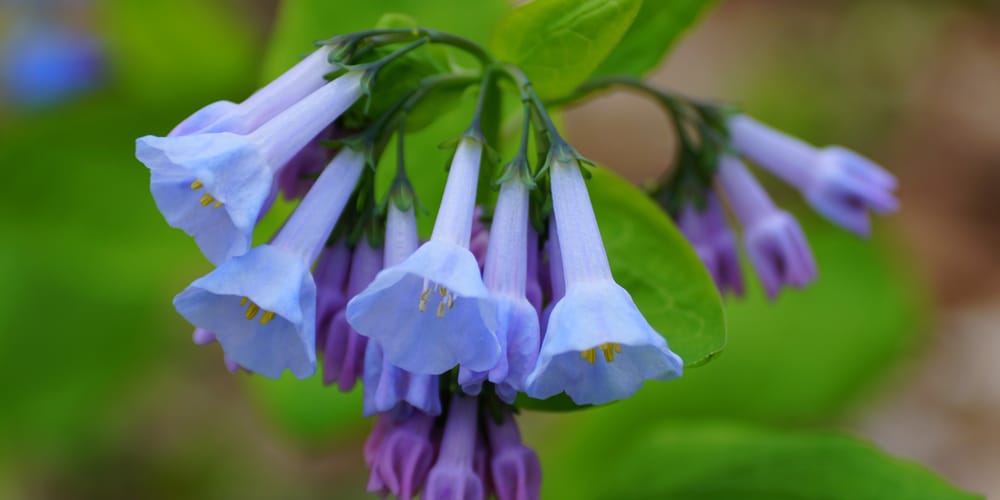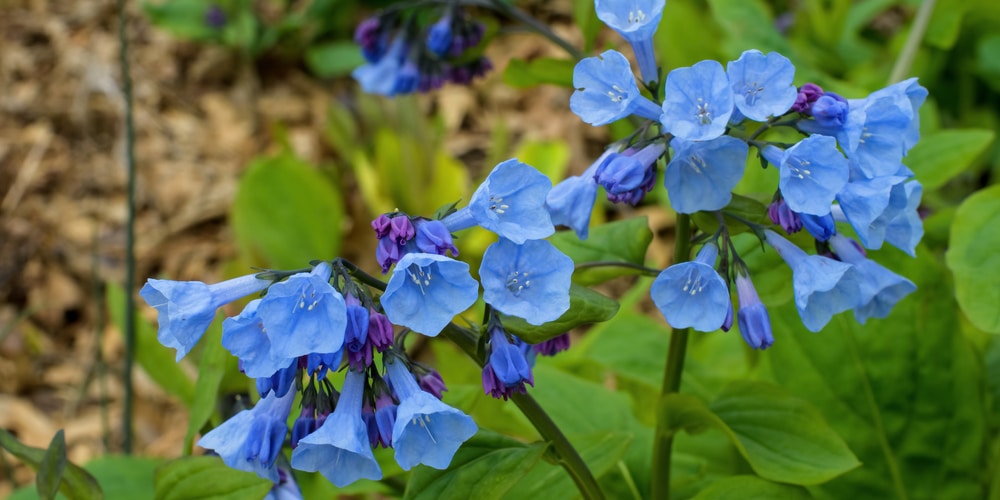Virginia bluebells (Mertensia virginica) are, without a doubt, one of the most stunning spring wildflowers. And they’re not just pretty to look at – they’re also interesting plants.
For instance, did you know that they’re actually also called Lungwort Oysterleaf because the leaves apparently taste like oysters when cooked? More of that later.
Do Virginia bluebells grow in Ohio?
The answer is yes, they certainly do! They are native to North America and are commonly spotted growing in moist woodlands as well as floodplains at forest edges.
Spotting a carpet of these wildflowers in full bloom while on a spring hike is a truly magical experience.
More about Virginia bluebells
Here are the most important things to know about Virginia bluebells if you’d like to grow them in Ohio.
Genus and family
Scientifically known as Mertensia virginica, Virginia bluebells are one of the 40 or so species of the genus Mertensia. The plants in this genus are herbaceous perennials whose distinguishing characteristic is blue, bell-shaped flowers.
It’s also a member of the borage family (Boraginaceae), and it commonly does well in hardy zones 3-9. This wildflower is seen as endangered in its native habitats, mainly as a result of habitat destruction in addition to the natural flooding of rivers. For this reason, it’s becoming increasingly common in isolated areas.
Foliage description
Mostly emerging in the early months of spring, this ephemeral plant first produces dark purple foliage which turns silvery green in a very short period.
As the plant continues to grow, its corrugated buds will start to unfurl, revealing charming tiny, cerulean blue, bell-like flowers.
These colour changes are said to be the result of pH variations in the petals and soil. The flowers are made up of 5 petals that join to form a tube.
Blooming
Virginia bluebells will typically bloom in March and April (early to mid-spring). The blooming period typically lasts for three or four weeks.
After the plants have bloomed fully and passed the seeding stage, their leaves will gradually adopt a yellowish hue that signifies their death. They will then become dormant as mid-summer approaches.
Reproduction
The blooming season is an indication that your Virginia bluebells are ready to reproduce. As you may expect, they rely on pollination for reproduction. These plants cannot self-pollination, which is why they heavily rely on pollinators.
Butterflies are the most common pollinators of Virginia bluebells, mainly because they are able to reach the nectar with ease. Bumblebees can also pollinate these wildflowers, albeit with a little difficulty. The fertilized plants will then produce approximately 4 seeds.
These self-sowing seeds spread with great ease, but there is also an underground rhizome system that also facilitates the spreading of Virginia bluebells.
If you’d like to grow bluebells in your garden, the best approach is to get dormant rhizomes from reputable sellers. You should avoid getting your planting material from the wild at all costs.
Uses and benefits
Virginia bluebells are also referred to by the name Lungwort Oysterleaf. The lungwort part of the name comes from the fact that bluebells were once mistaken for European lungworts since they both have similar flowers. Some Americans were even trying to use Virginia bluebells in treating lung-related ailments.
The reality, however, is that the Lungwort Oysterleaf and the European Lungwort are in no way related to each other.
Earlier in the article, we mentioned about the bluebells’ leaves apparently tasting like oysters when cooked. That’s where the name Oysterleaf comes from. You, however, do not want to give those leaves a try since they contain some toxins.
Perhaps the greatest use or benefit of Virginia bluebells is that they provide food for pollinators like bumblebees that feed their larva using the protein-rich pollen. In addition, nectar from the flowers provides the bees with the energy that they need to move from one flower to the next, getting food for their babies.
Taking care of Virginia bluebells in Ohio
If you’re interested in growing Virginia bluebells in your Ohio garden, it’s important to know more about the conditions that you should provide to ensure that your plants thrive.
Soil:
Virginia bluebells prefer moist soil that is rich in nutrients. In addition, the soil should be well-drained, getting wet only occasionally. The soil pH should be as close as possible to 7.0. For best results, add plenty of compost to your soil before planting.
Light:
Since Virginia bluebells are shade-loving plants, they perform best in locations that offer dappled sunlight or full shade.
Water:
As mentioned earlier, Virginia bluebells grow best in moist soil. Make sure to water your plants regularly, especially during prolonged periods of dry weather.
Temperature:
Virginia bluebells are not tolerant of high temperatures. Luckily, Ohio is generally a cooler state, so this shouldn’t be a problem. Virginia bluebells will survive and thrive in USDA hardiness zones 3a through 8b.
When planted in zones 7 and 8 (top of the hardiness zones), bluebells will really require the full shade if they are to thrive.
Fertilizer:
The best option when it comes to offering your Virginia bluebell plants the nutrition that they need is to add some organic and compost fertilizer into the soil. You can, however, also apply a slow-release fertilizer in the spring.
Pruning:
Virginia bluebells can reach a height of two feet when fully grown. But even in such cases, you won’t be required to prune or stake your plants. You can, however, deadhead your plants whenever you want to prevent them from self-seeding.
It’s also important to trim off the foliage when it dies during summer. That way, harmful insects won’t have a place to reside. Just be sure to be careful when trimming.
Good thing they are also deer and rabbit resistant, so you won’t have to worry about any pesky critters bothering your bluebells.
Virginia bluebells Ohio: Conclusion
Virginia bluebells are certainly a beautiful addition to any garden. So if you’re interested in growing them, be sure to provide the right conditions.
With a little care, you’ll be able to enjoy their beauty for years to come!
Related Article: 8 of the Best Bulbs That Grow in Zone 8


